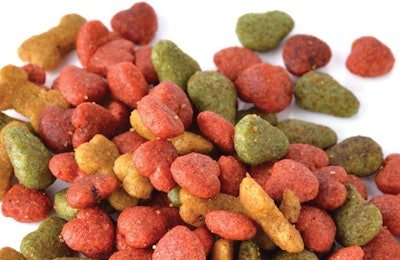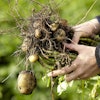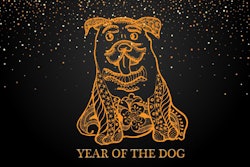
The Association of American Feed Control Officials (AAFCO) held its "mid-year" meeting on January 22–24, 2018, in Anaheim, California, USA. The meeting was convened only a matter of miles away from Disneyland, also known as "The Happiest Place on Earth." Many but maybe not all attendees were happy with the outcomes of the meeting.
Pet definitions: “Pet” vs. “specialty pet,” new definition for GLA
The first order of business at AAFCO meetings is the general session, when members vote on proposals brought forward from the various committees. Approved at this session were amendments to the definitions in the AAFCO Model Bill for "pet" and "specialty pet." "Pet" now specifically refers to the species Canis familiaris and Felis catus. This was to remedy a discrepancy in interpretation as to whether "dogs" and "cats" meant only the domestic species or included their wild brethren. It is now clear that wolves and tigers are not "pets," hence labels for foods intended for those species don't need to conform to the AAFCO model regulations for pet foods but rather to those applicable to animal feeds in general.
Of particular need for clarification in the "specialty pet" definition was the status of rabbits. There are long-existing regulations that consider rabbits to be livestock, and feeds intended for livestock must be labeled differently than specialty pet foods, especially with regard to the guaranteed analysis. This has caused problems for some manufacturers, because the labels for pet rabbits compared to those for other small mammals (e.g., hamsters, guinea pigs) were sometimes required to be decidedly different and hence were potentially confusing to purchasers. As it stands now with the amendment, labels of foods for rabbits "not raised for food or fur" should be subject to the pet and specialty pet food regulations only.
A new definition for the ingredient "Gamma-Linolenic Acid Safflower Oil" was made official by the membership. Gamma-Linolenic Acid (GLA) is an omega-6 fatty acid. An intermediate metabolite between linoleic acid and arachidonic acid, it is not recognized as a dietary essential nutrient per se, though it may be of benefit on its own relative to support of skin and coat health. This new definition provides an option for those wishing to add GLA to product formulations but were unable to use evening primrose oil (which is not defined as an acceptable source by AAFCO). However, at this time the definition for this new oil restricts use to inclusion in complete dry dog foods intended for adult maintenance only.
New regulations: Carbohydrate claims
Finally, after many years and countless proposals, the membership enacted new regulations to allow for carbohydrate-related claims on dog and cat food labels. As opposed to regulations already in place for livestock feeds (particularly for feeds for horses), "low carb"-type claims would not be allowed on pet food labels, mainly because there is a lack of consensus as to how low is "low" and whether that quality has a true effect on dog and cat health.
However, comparative claims (e.g., “x% less carbs than ___") would be acceptable when supported by appropriate guarantees for maximum percentages of dietary starch and sugars. These new rules should provide for a means for manufacturers to convey information about carbohydrate content for those consumers for whom this factor is important in their purchase-making decisions.
Pet Food Committee session
The Pet Food Committee session was also very active. The one noncontroversial item was to add a regulation to AAFCO Model Regulation PF2 to stipulate to need for calorie content statements on all dog and cat food labels.
One of the proposals that was rejected by the committee was a request by the Global Alliance of Pet Food Associations (GAPFA) to raise the maximum allowance for vitamin A content of foods for growth and reproduction under the AAFCO Dog Food Nutrient Profiles. A review by a panel of experts concluded that the documentation was insufficient to support a change to the current level.
Also rejected was a proposal by the Veterinary Oral Health Council (VOHC) to recognize the validity of that organization's protocols in the AAFCO guidance for dental claims. However, the Committee was reluctant to reference a third party in AAFCO documents and was concerned as to implications such a reference would have on enforcement where VOHC standards may deviate from those of AAFCO.
Lastly, a new working group was formed to investigate and make recommendations on Model Regulation PF3(e). Intended as a "catch-all" for those products names that did not otherwise conform to the AAFCO naming rules, in light of changes to the other regulations over the years this one may have outlived its usefulness.
There were too many outcomes items from this meeting to cover here. Other notable items, such as progress on the efforts toward "Pet Food Labeling Modernization" and further deliberation re: "human grade" will be discussed in upcoming columns.

















